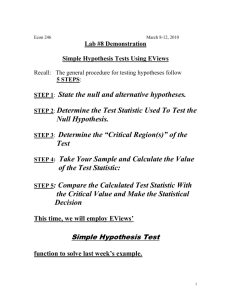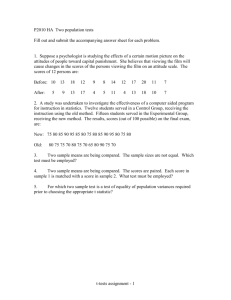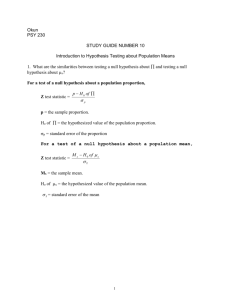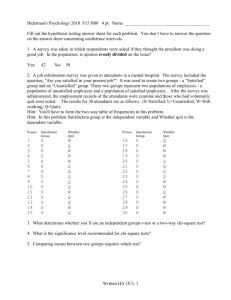Statistical Hypothesis Testing Guide
advertisement
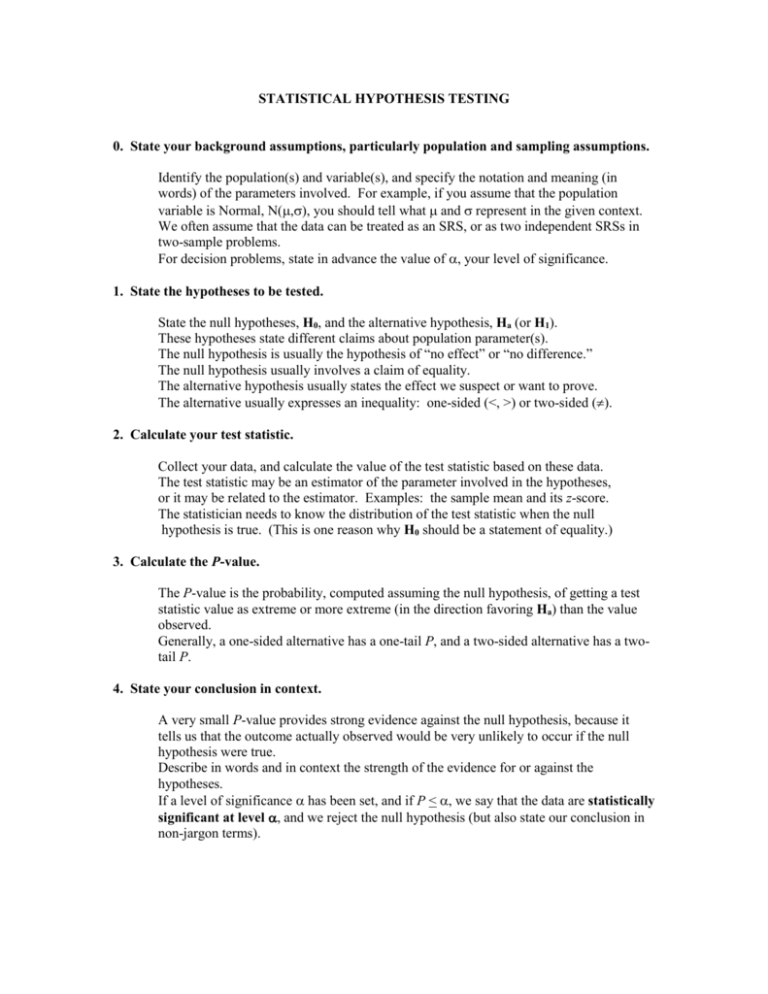
STATISTICAL HYPOTHESIS TESTING 0. State your background assumptions, particularly population and sampling assumptions. Identify the population(s) and variable(s), and specify the notation and meaning (in words) of the parameters involved. For example, if you assume that the population variable is Normal, N(,), you should tell what and represent in the given context. We often assume that the data can be treated as an SRS, or as two independent SRSs in two-sample problems. For decision problems, state in advance the value of , your level of significance. 1. State the hypotheses to be tested. State the null hypotheses, H0, and the alternative hypothesis, Ha (or H1). These hypotheses state different claims about population parameter(s). The null hypothesis is usually the hypothesis of “no effect” or “no difference.” The null hypothesis usually involves a claim of equality. The alternative hypothesis usually states the effect we suspect or want to prove. The alternative usually expresses an inequality: one-sided (<, >) or two-sided (). 2. Calculate your test statistic. Collect your data, and calculate the value of the test statistic based on these data. The test statistic may be an estimator of the parameter involved in the hypotheses, or it may be related to the estimator. Examples: the sample mean and its z-score. The statistician needs to know the distribution of the test statistic when the null hypothesis is true. (This is one reason why H0 should be a statement of equality.) 3. Calculate the P-value. The P-value is the probability, computed assuming the null hypothesis, of getting a test statistic value as extreme or more extreme (in the direction favoring Ha) than the value observed. Generally, a one-sided alternative has a one-tail P, and a two-sided alternative has a twotail P. 4. State your conclusion in context. A very small P-value provides strong evidence against the null hypothesis, because it tells us that the outcome actually observed would be very unlikely to occur if the null hypothesis were true. Describe in words and in context the strength of the evidence for or against the hypotheses. If a level of significance has been set, and if P < , we say that the data are statistically significant at level , and we reject the null hypothesis (but also state our conclusion in non-jargon terms).







